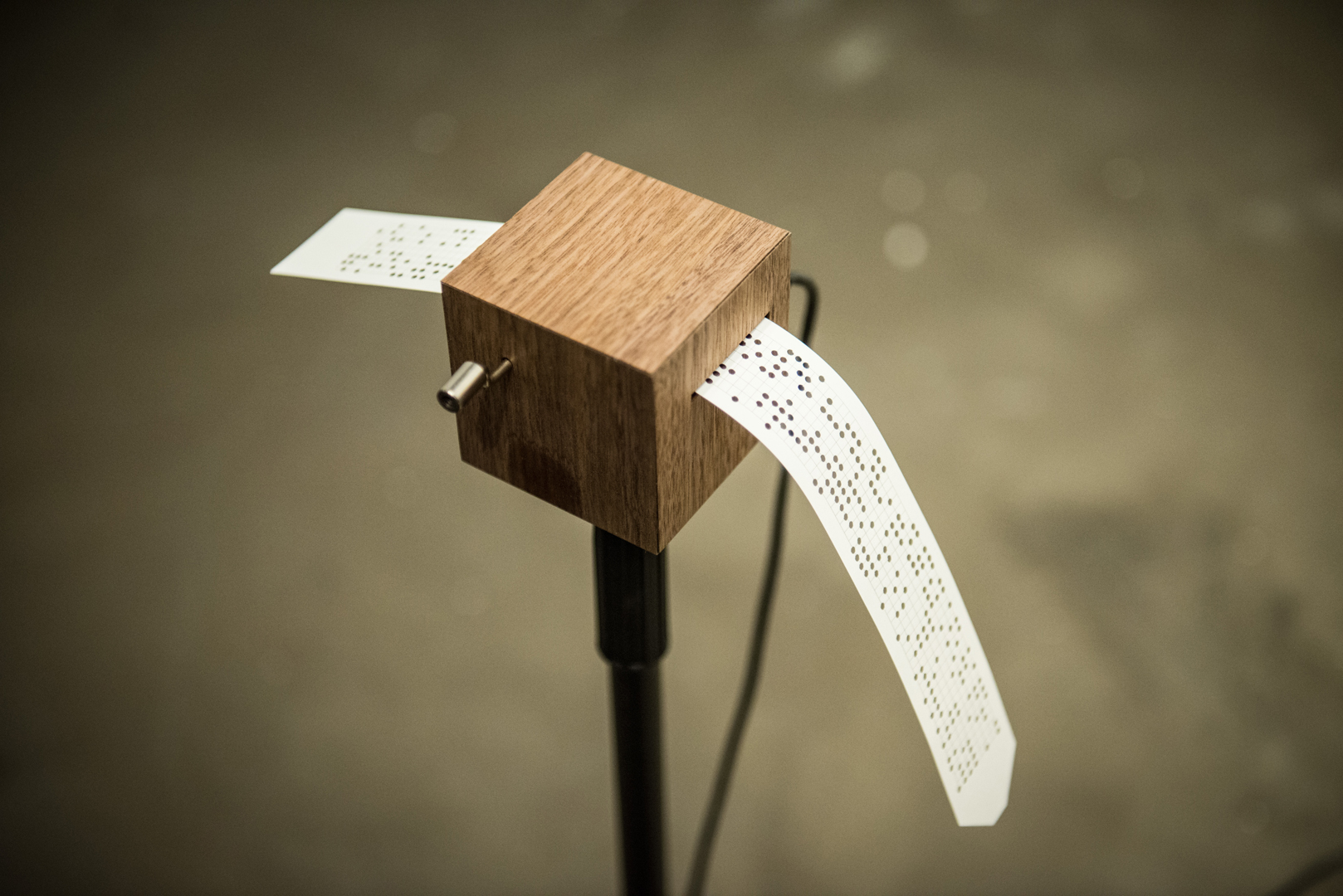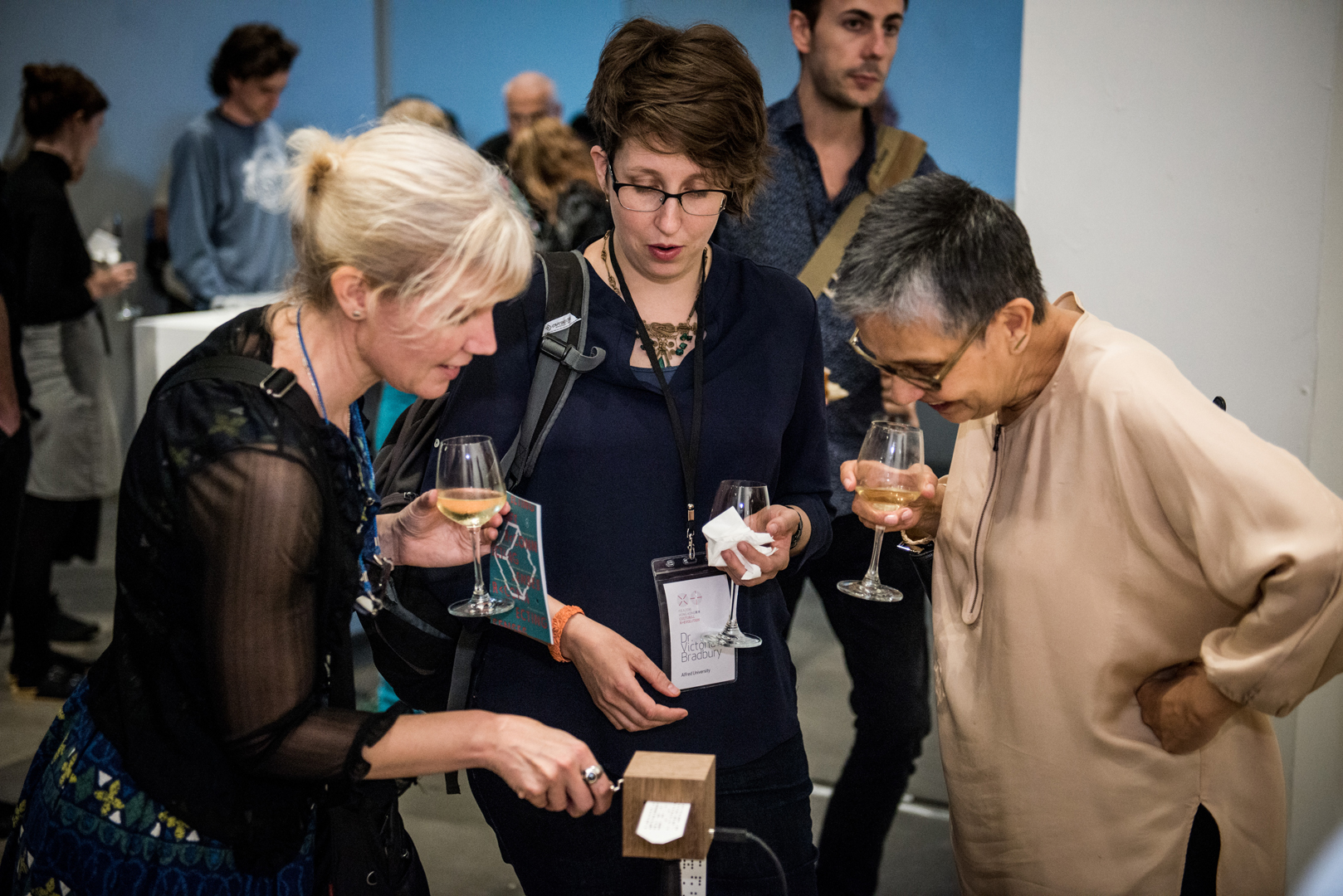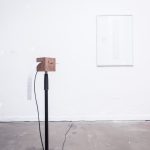“A Digital Music Box Ensemble” by Takuma Takahashi, Shugo Hirao
Title:
Artist(s) and People Involved:
Exhibiting Artist(s):
Symposium:
Venue(s):
Creation Year:
Medium:
Artist Statement:
A Digital Music Box Ensemble is a Music Box, which reads a punching card. When the holes of the punching cards flick onto a pin of a rotating wheel, it triggers a sound. Takahashi adapted a so-called “Punched Card Music Box” to a digital device. The most interesting part of the “Conventional” Punched Card Music box is the possibility by any user, even without any musical education, to easily compose music by making holes into a predefined grid on a card. However, no one has ever tried to add the possibility to modify the tone of sound by which the metal flicks. In order to fill in that gap, this device can convert the data from user created cards. It simply sends MIDI data via a USB cable to the computer built-in synthesizer, which play their favorite tones.
The pitch has been assigned to vertical axis of a conventional punching card. The holes on the card can be punched on a position on the Y axis from 1 to 8. These holes correspond to a specific audio channel previously set on a computer. This apparently simple device allows a wide possibility of music composition. It recognizes the instrument channels, the tones and the specific speakers. So the users can compose and experiment with many kind of music, which require a complex setting like an orchestra, or other stereophonic sounds that use multi-speaker system.
A concept of the device. Takahashi created this music box in order to highlight the concept that human handwork and computer digital processing can intercommunicate with the help of a simple device. To explain his work in more detail, Takahashi uses the term “soft generative” to describe a human type of input that generates digital data on a computer. It implicates that human inconsistency can also be part of the process of composition.
Takahashi’s artwork was inspired by the contemporary musician, Conlon Nancarrow (1912-1997), who had a very systematic and interesting way to experiment with micro-durational composition. Takahashi would also describe Nancarrow’s work as “soft generative”. “I completely had no interest in a harmony and a melody.” Nancarrow said himself, therefore he always focused on the rhythm and the tempo of the music from the very beginning. So he used his focus on the “Player Piano” in order to invent music, which was far beyond human instrument skills. The player piano is an instrument just like a regular piano but instead of a human player it uses the input of a perforated roll of paper, which contains the score of a song. It uses the power of the air to activate the piano mechanism. The rolls of paper used by Nancarrow are very similar to the punched cards Takahashi used for his work. Instead of writing a regular musical score book, Nancarrow used a different way to compose. He used piano tones and the complicated relationship between rhythm and tempo to make eccentric rhythm and tempo sonification with great precision. It opened new possibilities for the contemporary music field. The device Takahashi have developed is like Nancarrow’s experiment, which combines complicated rhythm and tempo. No other device uses the legacy from Nancarrow’s innovative ideas to create a simple way to convert human handwork and digital media.
System overview. Height different digital audio channels correspond to height specific positions on the Y axis of a punch card. For example, a hole on the bottom position of the card will activate the number 1 audio channel in the computer and a hole on the top position of the card will activate the channel number 8. On the X axis (left to right), users can punch holes on a defined grid system. They can use any length they want. After making holes into the card and insert it into the “Digital Music Box”, user can turn the handle to play their music. When a hole of the punch card reaches the switches connected to the micro controller, Arduino, inside of the Music Box reads the position of holes, and converts it to a digital signal. If the micro controller senses a hole, it sends a message “MIDI NOTE ON”, or if there is no hole, it sends the message “MIDI NOTE OFF”. After that it uses the hole position to create a flow of MIDI information and send it to the computer via a USB cable. On the computer, Max/msp and AbletonLive8 use the flow of MIDI information of the device, to produce sounds. The algorithm written in Max/ msp, was programmed to harmonize the MIDI signal and send it to 8 audio channels in AbletonLive8. Then, AbletonLive8 assign and play a digital instrument on each specific channel. In addition, the device offers the possibility to change the instrument played. The user can assign each audio channel from 1 to 8 in AbletonLive8 to an electric piano to channel 1, for example. Then assign a drum kit in channel 2 and a bass in channel 3 and so on.








